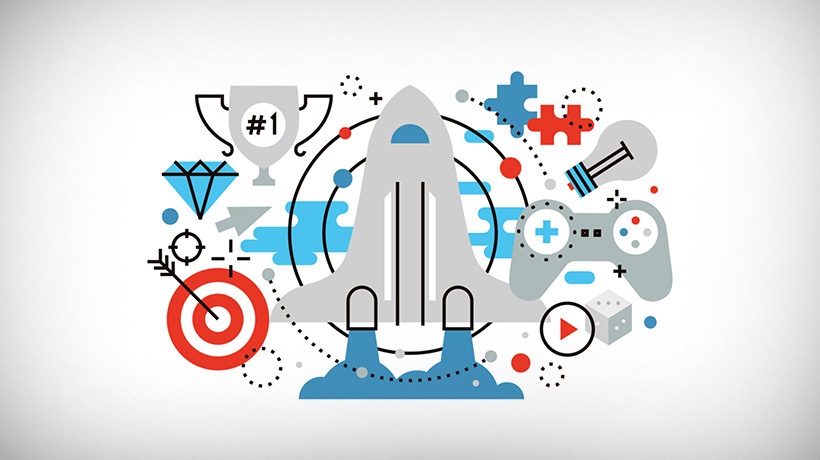Don’t just gamify the sales funnel. Gamify the employee engagement funnel!
When have you last used a real funnel? A funnel with a conical mouth and narrow stem which is then inserted into a bottle and used to transfer liquid? I used one last week to transfer some olive oil from a gallon container into a smaller bottle I can use when cooking. As I took the funnel out of the utensil drawer it struck me how rarely is it used in the kitchen and how often it is used (and abused) as a business term.
Real funnels are used to moderate the flow of a liquid into a container. But as a business term they are used as a metaphor for a sales process where leads come in, go through a sales process and hopefully emerge at the bottom as actual sales. Managers are tasked with optimizing sales funnels and driving employees to sell more. As employees, sales opportunities or anything else passes from phase to phase on the funnel, their value to the organization becomes higher.
I’d like to introduce the concept of the employee engagement funnel. I believe that it is closely tied to sales success.
The employee engagement funnel doesn’t have a lot of employees coming in and less qualified and able employees coming out of the other side. It is not a turnover funnel or a funnel made to find and select top performing employees. This funnel symbolizes how employees are made aware of corporate goals, learn about the corporation and change the way they do their job. Eventually they make more employees aware and help them do better. As employees go through the engagement funnel, the organization needs offer different tools for each stage in order to optimize the process.
Even simple awareness of the engagement process makes employees better. Employees learn what the organization wants and what they need to do to take part in it. They will know, for instance, that the company wants to sell products, know the company’s products, and how to execute the sales strategy. As they travel through the funnel employees become leaders that will create engagement for others, and ambassadors that will help other employees become better.
The employee engagement funnel begins with awareness – making the employee know what corporate goals are (such as growing sales for a certain product). This leads the employee into the second phase – onboarding – training or learning (e.g. about the potential customer benefits of a product). If both these phases are completed successfully, the employee is able to do a better job – he is engaged. However, this doesn’t signify the end of the process. Employee engagement can go further – into becoming a leader (leading employees as they go through the engagement funnel) and even becoming an ambassador (bringing new employees into the funnel).
Gamification accelerates the engagement funnel
Gamification should take center stage in driving the employee engagement funnel. Gamification is going through a process that is making it richer and better suited to make sustainable change in enterprises. This new era of enterprise gamification goes beyond badges and leaderboards and using compelling game mechanics such as narratives.
Here’s how gamification plays out in each phase of the employee engagement funnel:
- Awareness (Know)
Αlthough no one will admit it, many companies don’t do a great job of making employees aligned with corporate goals. While management is measured through key performance indicators (KPIs) that are aligned with business goals, employees are often forgotten. Therefore, the first goal is to make sure that employees are aware of the corporate goals and how they relate to their day to day job. One of the best ways to do this is to use gamification to drive specific calls to action and communicate behavioral goals to employees. - Onboarding employees (Learn)
Good onboarding and corporate training practices give the employee the tools required to do a good job. Gamification used during this process should focus on completion rather than competition, so the sense of a job well done will pervade the employee’s self-esteem rather than unnecessary competition that is sometimes overly encouraged with the false sense it may create performance improvement (actually it can alienate employees) - Engagement (Act/Do)
This is where thoughtful gamification comes in, taking employees across all enterprise systems and motivating them to do well through clear calls to action and encouragement of improvement and individual goals. At the end of each period, further awareness of how employee activities are tied to company goals is encouraged. - Internal Leadership development (Lead)
At this point employees know their job and are rewarded for doing well relatively to themselves, and not a disconnected sales goal. At this stage, employees can evolve into local leader-heros. Leaders help others improve and lead their teams. - Corporate ambassadors (Viral expansion)
These employees become corporate ambassadors, communicating and acting upon the company vision both internally and externally, resulting is better customer interactions, customer satisfaction and better business for the company. Typically, ambassadors pull new employees into the employee engagement funnel, growing the ranks of engaged employees, in a viral expansion.
In this sense, perhaps not all employees can become ambassadors. But thinking of the employee engagement funnel as a process in which employees are not “lost” like leads that don’t end is sales, but rather employee energy is redirected (like liquid) into becoming a company ambassador empowers employees and promises better outcomes for all.
This is a first post of three on the employee engagement funnel. The next posts will discuss gamifying lead generation program and how to optimize the transition inside the funnel.







